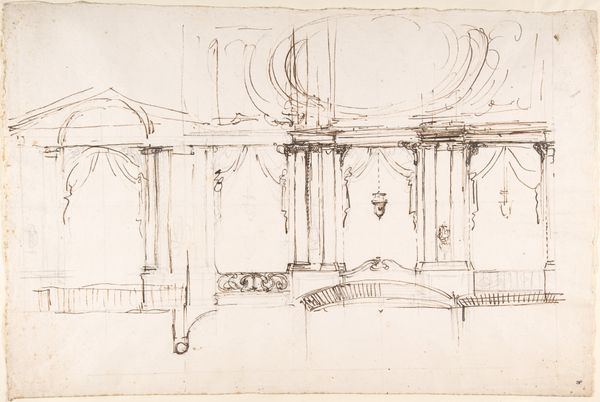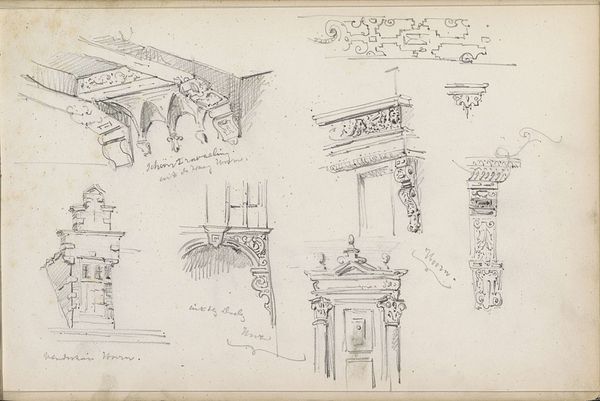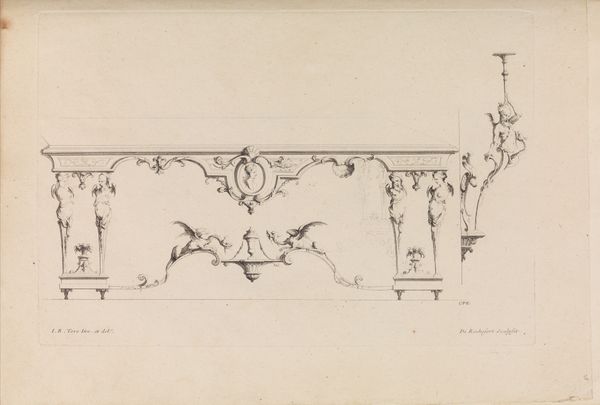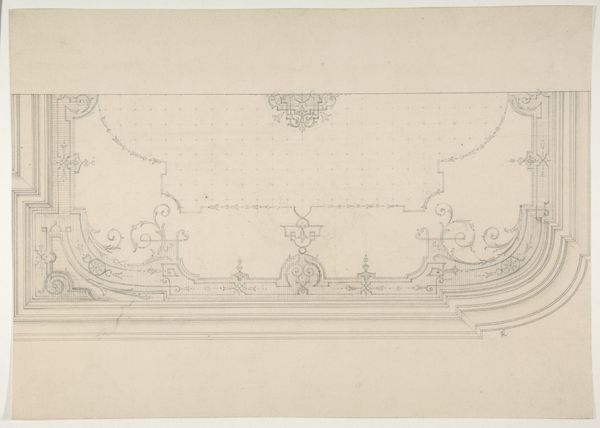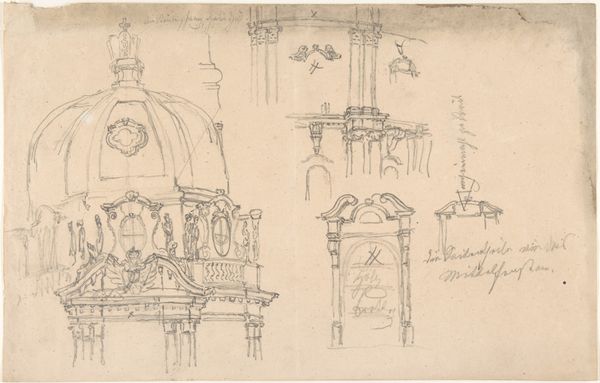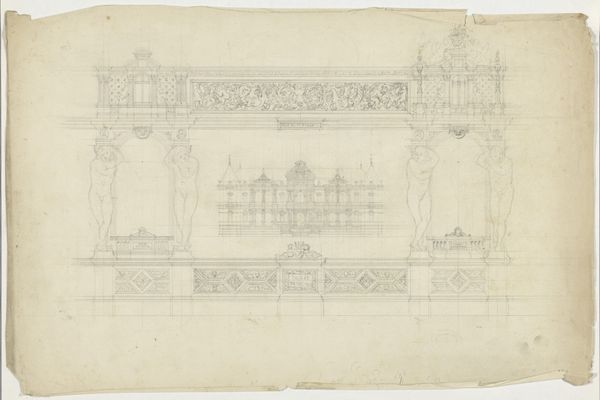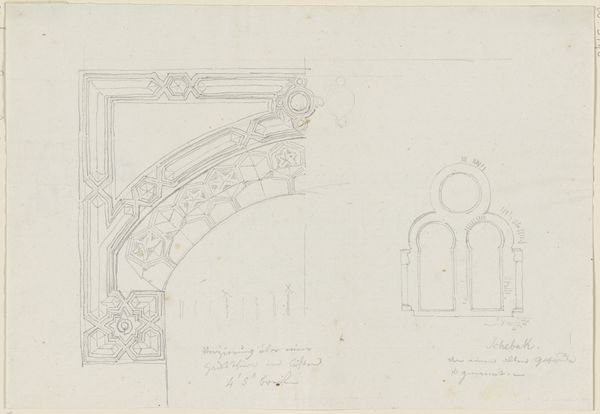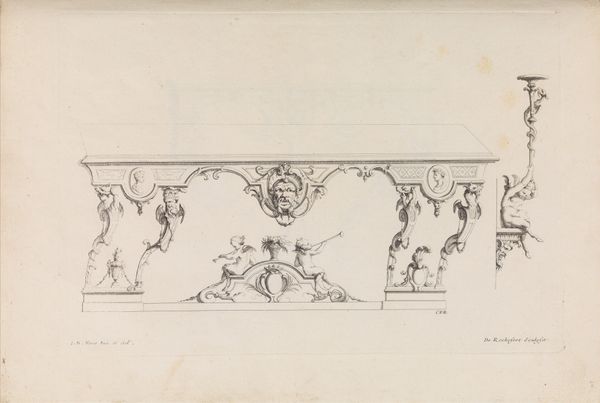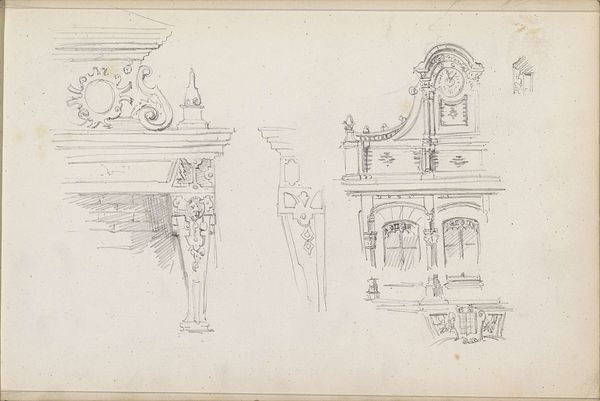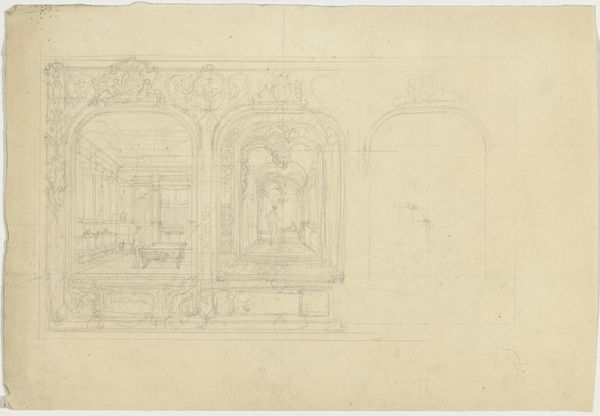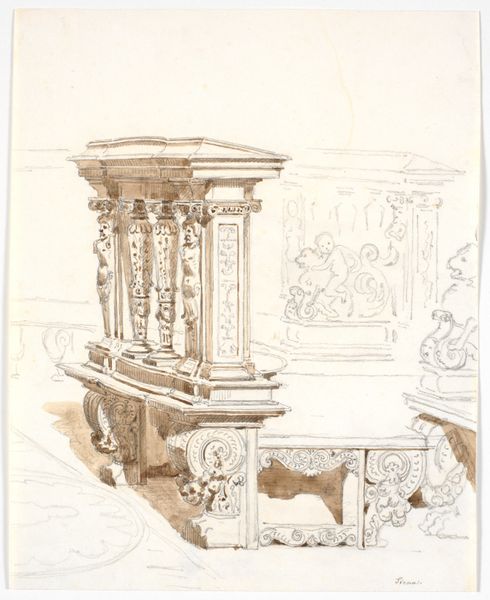
drawing, paper, pencil
#
drawing
#
light pencil work
#
quirky sketch
#
pen sketch
#
perspective
#
paper
#
personal sketchbook
#
sketchwork
#
ink drawing experimentation
#
geometric
#
pen-ink sketch
#
pencil
#
sketchbook drawing
#
cityscape
#
storyboard and sketchbook work
#
sketchbook art
Dimensions: height 403 mm, width 492 mm
Copyright: Rijks Museum: Open Domain
Curator: Here we have a sketch titled "Koorhek van de Nieuwe Kerk te Amsterdam," or "Choir Screen of the New Church in Amsterdam." It was created by Nicolaas van der Waay before 1898. Editor: It feels like a peek into someone’s private thoughts, almost like we shouldn't be seeing this. The delicate pencil lines suggest transience, as though the artist quickly captured a fleeting impression. Curator: Indeed. Van der Waay, as an academic and portrait painter, often made preparatory drawings like these. The New Church was a significant site of national identity, frequently used for royal inaugurations and national events. This choir screen served as a literal barrier, demarcating the sacred space. Editor: Looking at the workmanship represented here – the repetitive patterns, the almost mechanical precision of the pillars… I wonder about the craftspeople who actually constructed the screen. Their labor shaped this physical manifestation of religious and political power. Curator: That's a key point. These screens visually and physically reinforce the hierarchical structure within the church and, by extension, within Dutch society itself. The drawing suggests that the architectural space influences behaviors. Editor: And the details! Note the cherubs and elaborate carvings on top. What does it communicate to the church patrons? All of these little components demand expert skills to assemble, but what level of society can afford to employ them to build spaces of religious devotion? Curator: Precisely. The artistry contributes to the sense of awe and reverence but also to exclusivity. And it makes you wonder what Van der Waay’s specific role was, why was he compelled to produce this drawing? Editor: I suppose to materialize a feeling in this holy space, I like how the tools and materials, humble pencil and paper, give form to an ideology but also hide the complex labor history behind such grand structures. It all comes down to whose story gets told and how. Curator: A perspective that certainly sheds light on this drawing’s significance, given the social role of Van der Waay’s artistry, which often revolved around such established societal structures. Editor: Yes, considering how sketches such as this act as intermediaries, shaping not only artistic creations but also power structures and, ultimately, social discourse.
Comments
No comments
Be the first to comment and join the conversation on the ultimate creative platform.
